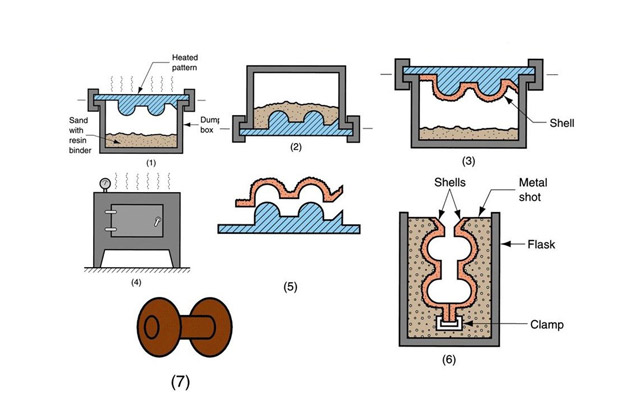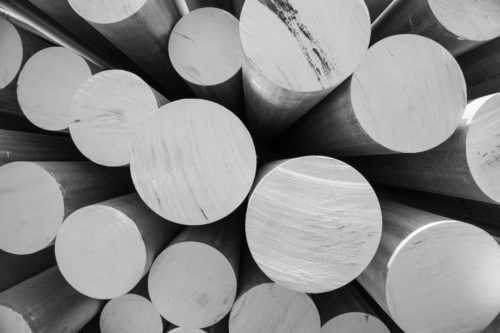Stahl Specialty Company Can Be Fun For Anyone
Table of ContentsAll about Stahl Specialty CompanyThe Facts About Stahl Specialty Company RevealedOur Stahl Specialty Company DiariesStahl Specialty Company - An OverviewStahl Specialty Company Fundamentals ExplainedExcitement About Stahl Specialty Company

If you're designing a steel product, you've likely taken into consideration utilizing aluminum as the base material. Pure aluminum has limited applications, so it is often incorporated with various other elements, such as silicon, magnesium, and manganese to form alloys.
Different components and quantities create a wide range of preferable physical and chemical properties. And the Light weight aluminum Association (AA), based in North America, has created specifications that control aluminum alloys' composition, homes, and language. There are 2 kinds of aluminum alloys wrought and cast. Factory workers form these alloy key ins various methods, which considerably influences their qualities.
Stahl Specialty Company - Questions
Cast aluminum alloys are made by thawing pure aluminum and incorporating it with other metals while in liquid type. The mix is put into a sand, die, or financial investment mold. After solidification, the metal is gotten rid of from its mold and mildew. At this phase, it remains in either its final type or as a billet or ingot for additional processing.

160.0 represents a cast with a minimum of 99.60% aluminum. The fourth figure, which follows the decimal point, defines if the alloy is a spreading (xxx. 0) or an ingot (xxx. 1). Wrought light weight aluminum alloys likewise start by combining molten light weight aluminum with other steels. As opposed to cast alloys, nevertheless, they are developed into their final shape with processes such as extrusion, rolling, and flexing after the steel has strengthened into billets or ingots.
There are lots of small differences between wrought and cast aluminum alloys, such as that cast alloys can contain more substantial quantities of various other steels than functioned alloys. However one of the most notable difference between these alloys is the construction procedure via which they will certainly most likely to supply the last item. Besides some surface therapies, cast alloys will certainly leave their mold and mildew in virtually the specific strong type preferred, whereas wrought alloys will certainly undertake a number of adjustments while in their solid state.
If you think that a functioned alloy might be the very best for your job, have a look at a few of our posts that describe more about details wrought alloys, such as Alloy 6061 and Alloy 6063. On the various other hand, if you believe a cast alloy would certainly be better for you, you can discover more about some actors alloys in our Alloy 380 and Alloy 383 short articles (coming quickly).
Stahl Specialty Company Things To Know Before You Get This
When choosing an aluminum factory for your manufacturing requirements, it's important to research several aspects. Among the most vital facets to consider is the experience and capability of the foundry. Foundry. Selecting a shop who has the best expertise of the light weight aluminum casting procedure, and the profile to show for it, helps to have an effective end result for your job
Having the experience and sector knowledge to engineer your castings for ideal manufacturing and quality results will simplify the task. Producing aluminum spreading requires a complicated set of processes to achieve the appropriate results. When picking a new light weight aluminum factory to companion with, ensure they have comprehensive market experience and are experienced concerning all aspects of the aluminum casting procedure: design, production, product analysis, and product testing.
The factory needs to likewise have a tried and tested track document of supplying extraordinary products that satisfy or surpass client expectations. Quality control ought to also be at the top of your listing when choosing a light weight aluminum shop. By collaborating with a qualified foundry who follows the criteria for quality assurance, you can secure the stability of your product and ensure it meets your specifications.
By selecting a company that uses services that meet or surpass your product demands, you can be sure that your task will be finished with the utmost precision and effectiveness. Different components require various production strategies to cast light weight aluminum, such as sand spreading or die spreading.
Our Stahl Specialty Company Ideas
Pass away spreading is the name offered to the process of developing intricate steel parts through use mold and mildews of the element, additionally understood as passes away. The procedure uses non-ferrous metals which do not have iron, such as light weight aluminum, zinc and magnesium, as a result of the desirable residential or commercial properties of the steels such as reduced weight, greater conductivity, non-magnetic conductivity and resistance to corrosion.
Pass away spreading manufacturing is fast, making high manufacturing degrees of parts simple. It produces more elements than any type of various other procedure, with a high level of accuracy and repeatability. To find out more concerning die spreading and pass away spreading products used in the process, read on. There are three sub-processes that fall under the category of die casting: gravity pass away casting (or irreversible mold and mildew spreading), low-pressure die spreading and high-pressure die spreading.
No matter the sub-process, the die spreading process can be damaged down right into six steps. After the purity of the alloy is evaluated, dies are developed. To prepare the craves spreading, it is necessary that the passes away are tidy, so that no deposit from previous productions stay. After cleansing, the ejection lubrication is put on the die to guarantee a smooth launch.
9 Simple Techniques For Stahl Specialty Company
The pure steel, likewise recognized as ingot, is included in the furnace and maintained the molten temperature level of the metal, which is then transferred to the shot chamber and infused into the die. The stress is after that maintained as the steel solidifies. When the steel strengthens, the cooling procedure begins.
(https://www.topsitessearch.com/stahlspecialty.com/)
The thicker the wall surface of the component, the longer the cooling time as a result of the quantity of indoor metal that also needs to cool down. After the part is fully cooled, the die halves open and an ejection system pushes the component out. Following the ejection, the die is closed for the next shot cycle.
The flash is the added product that is cast during the process. This need to be cut off utilizing a trim tool to leave simply the primary part. Deburring removes the smaller sized pieces, called burrs, after the trimming procedure. Lastly, the component is polished, or burnished, to offer it a smooth surface.
Stahl Specialty Company Fundamentals Explained

Zinc is one of the most previously owned alloys for die casting due to its lower price of raw materials. Its deterioration resistance likewise allows the parts to be long lasting, and it is one of the extra castable alloys due to its lower melting factor.
As pointed out, this alloy is among the most commonly made use of, yet produces will, sometimes, select aluminum over zinc because of light weight aluminum's manufacturing benefits. Aluminum is very cost-effective and one of the extra flexible alloys. Aluminum is made use of for a number of various products and markets anything from home window frames to aerospace products.